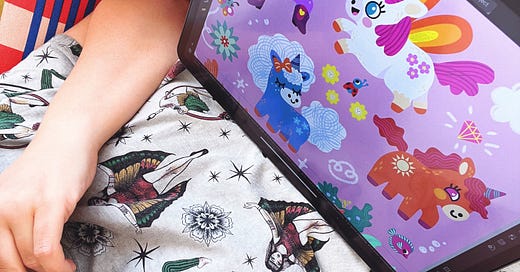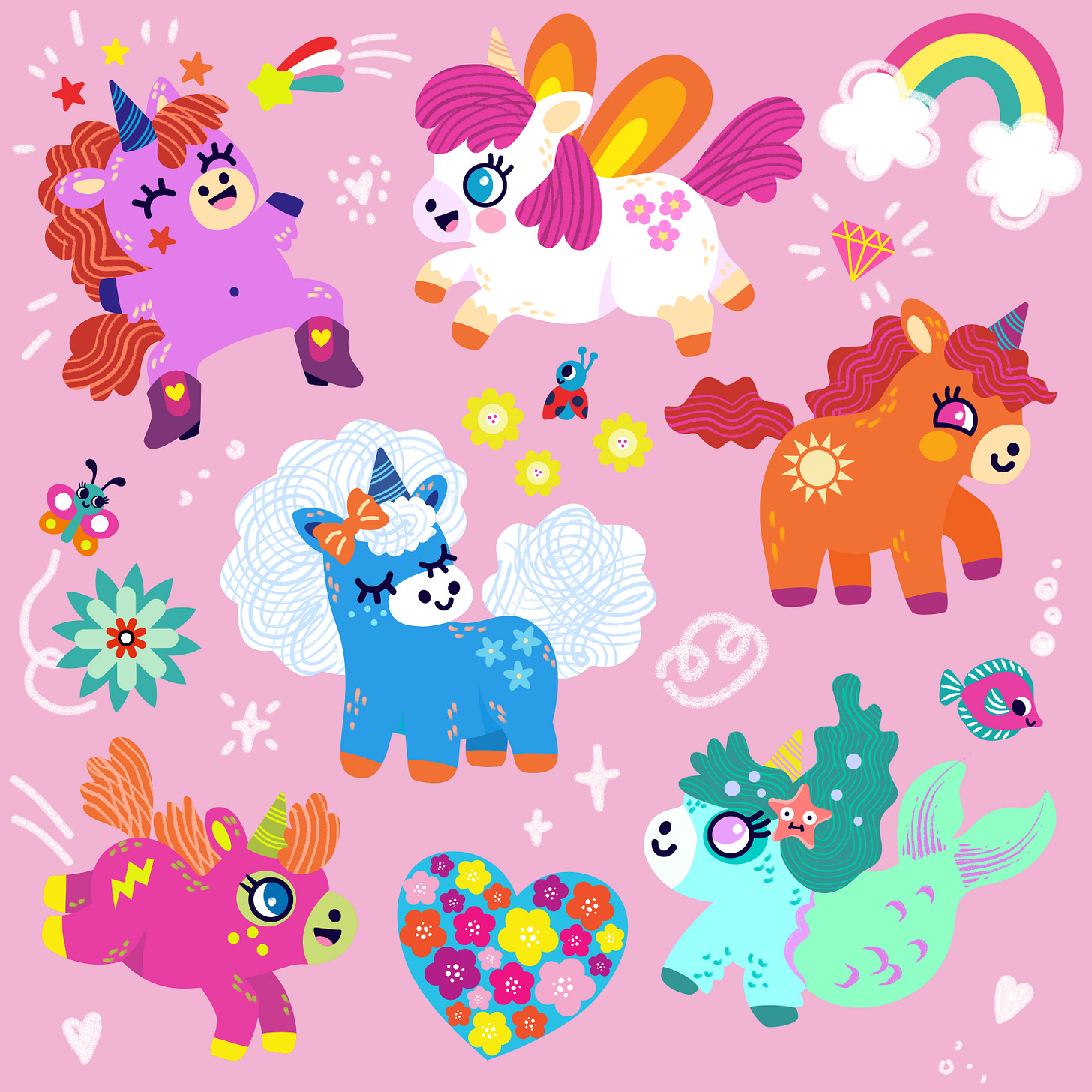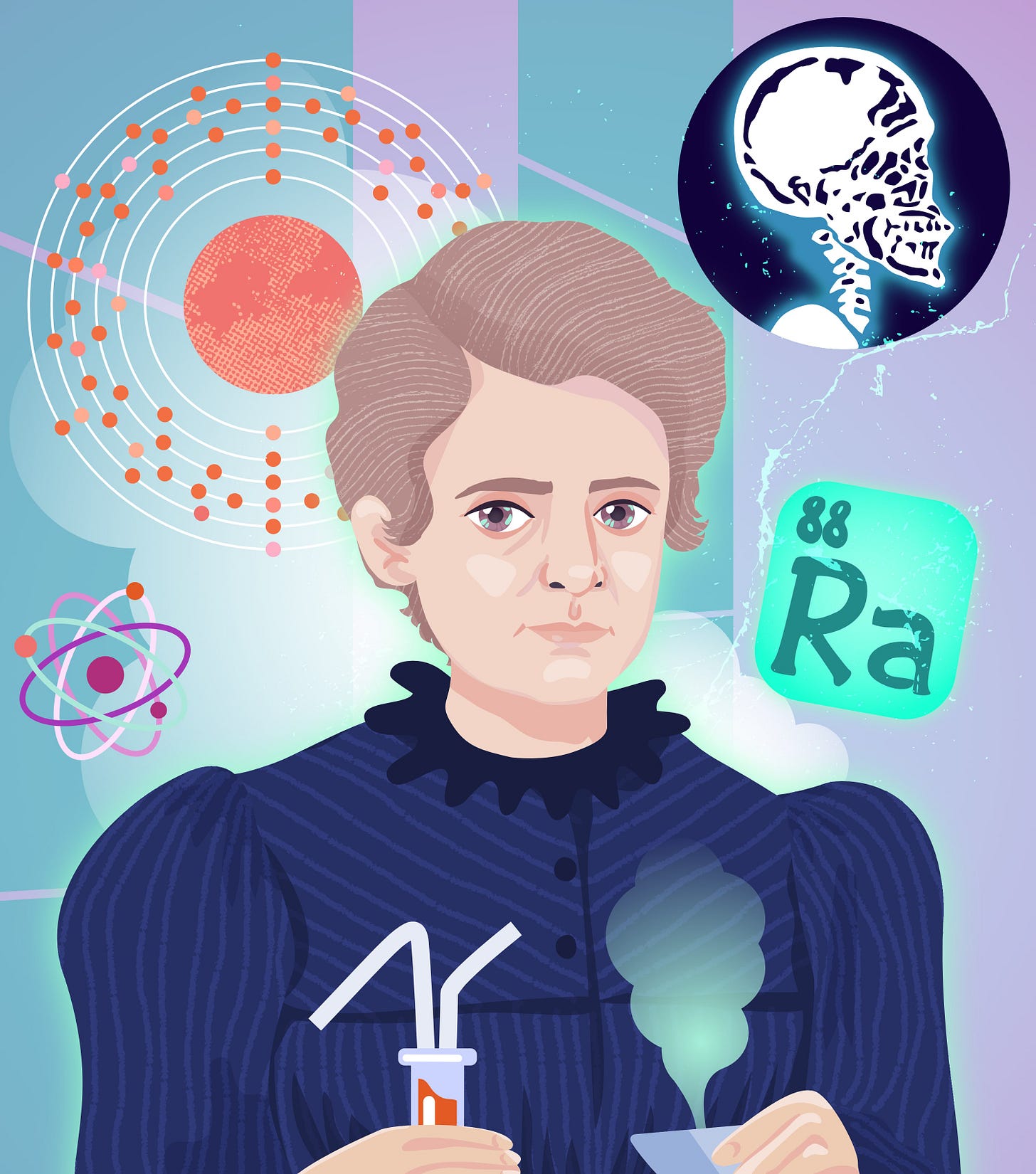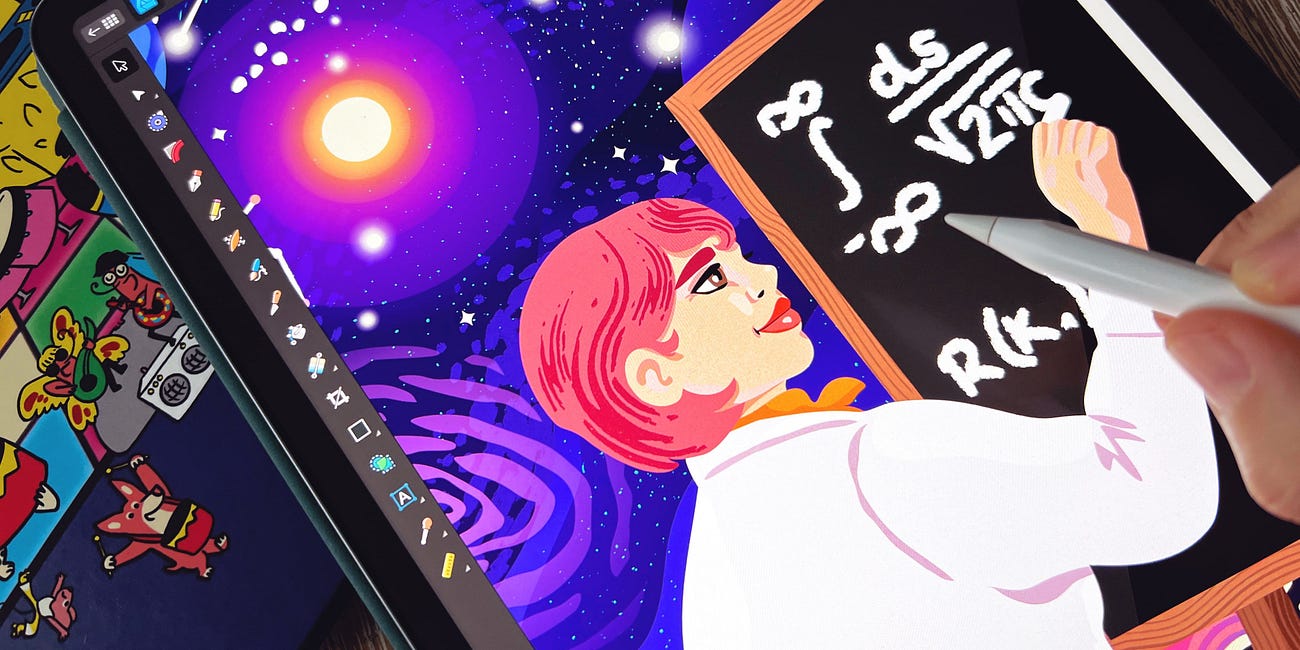Last year I faced a difficult dilemma: I was asked to change/adjust my style to “get more jobs”, but I couldn’t do it. It felt unnatural, and no matter how hard I tried, the work didn’t resonate with me. That experience made me question whether I could be both true to my artistic voice and still find success as an illustrator. This is a common struggle—how do you stay authentic while also being marketable and getting hired?
About the image above, this is what I draw for my 4 year-old daughter in my spare time, she has a phase for unicorns :)
Staying true to your style in an ever-changing industry can be a challenge. Trends shift, clients have specific requests, and the temptation to compare yourself to others is ever-present. For me personally - I wanted to be successful specifically on the German market, that’s where I live, and the reality is that my style is not so “hot” in here… So, how do you hold on to what makes your work uniquely yours while also growing as an artist?
1. Understand your core aesthetic
Your style is more than just the way you draw—it’s a mix of your influences, the tools you use, the subjects you love, just like the unicorns above - it can be inspired by real life. Take time to analyze what makes your art different. Is it your color palette? Your linework? Your storytelling approach? I often heard from my friends that if they’re scrolling on Instagram and the stumble upon my illustration, they can tell it is me.
So what is me? Definitely COLOR, I love bright colors and you won’t see my using lots of khaki, brown, beige tones. The flow of my line, the way I draw the eyes… Is it all deliberate? It really did change over time. OK, it’s a bit of a sneak peek, there will be a YouTube speedpaint video showing my process soon, but let’s take this artwork that I haven’t shared anywhere yet:
I am sharing a snippet from my Affinity Designer interface. Would you say that this illustration is “me”? Leave a comment if you’d like to!
So: bright colors - check! Big graphic eyes - check! Special details created with my favorite Affinity brushes, for example on her hair - check! I didn’t even think too much when I was sketching this illustration, but it is mine, came from the heart, and I definitely stayed true to my style without even questioning it, some work in progress for you in here:
But hey, would this SELL in Germany? Not sure, probably not.
2. Experiment within boundaries
Growth is essential for any artist, but growth doesn’t mean abandoning your style. Instead of completely reinventing your work every few months, try controlled experimentation. Maybe you explore a new medium, push your color choices, or tweak your compositions while maintaining the essence of your style.
So, specifically for the German market, I was asked to work on more depth and texture. Good luck with that when someone like me likes a clean flat vector style :D Sure, texture can add a lot of interest. But as an illustrator my job is to convey an idea, in my own way. And if for me the most efficiency is through flat vectors, then I stick to it. And guess what, potential clients will simply know - Wera is our “vector lady to-go-to”, and they may remember me for specializing in that, and that’s all ok! So, as far as I was drawing the unicorns for my daughter, this is really as far as I could go with texture:
Pretty sweet, it was fun and I enjoyed working with my vector-based brushes! They have amazing properties anyways, you can read more about it here:
Vector brushes vs raster brushes in Affinity Designer
In the world of digital illustration, tools and techniques significantly impact the final outcome. I personally started off with raster art in Procreate, as many of us :) Next, I switched to vector art in Affinity Designer, which for many many reasons worked out the best for me. If you’d like to see a few more examples, check out the article on my website:
3. Balance client work with personal projects
Client projects often come with expectations that may push you outside your comfort zone. While it’s great to be adaptable, ensure that you also dedicate time to personal projects where you have full creative freedom. These projects can help you reconnect with your voice and remind you why you started illustrating in the first place. Hence the unicorns :)
Make sure that you always have some spare time, every quarter of the year, to create a personal project. Imagine always your end client or the end book category in mind, so that you can create something that will attract new potential clients. For me personally, it is important to find more non-fiction book projects for older kids, so recently I added in a new illustration to my portfolio, portraying Maria Skłodowska-Curie. Plus a personal mini project can help me practice something new, in this case - drawing more realistic portraits, but still 100% vector-based! How did I do?
4. Trust that your audience will find you
This is SO important! It’s easy to feel pressure to appeal to a wider audience by adjusting your style, but the right audience will appreciate your work for what it is. Consistency builds recognition, and staying true to your artistic identity will attract clients and followers who genuinely want to hire you and they believe you will be a good fit!
Rather than falling into the comparison trap, use other artists’ journeys as inspiration. Focus on what you admire and how you can apply those insights to your own work without losing your unique voice.
Your style isn’t something you find once and never change—it evolves naturally as you grow. The key is to allow that evolution to happen organically rather than forcing yourself into a mold that doesn’t feel right. At the end of the day, your illustration style is an extension of who you are. The more you embrace it, the stronger and more recognizable your work will become :) Hope this helps!
Wera
One year with my illustration agency - How many projects did I land?
A little over a year ago, I signed with Advocate Art, an illustration agency representing artists in children’s publishing and licensing. As a children's book illustrator, the decision to join an agency felt both exciting and nerve-wracking. Would it open doors to new projects? Would I feel supported in my career? Would it be worth the commission split? Now, after a full year of working with my agency, I can finally answer those questions.
Hi! I’m Weronika Salach, a freelance illustrator specializing in children’s books, toy design and surface pattern design. Over 40,000 happy students have taken my digital illustration courses and watched my YouTube videos. Let’s connect :)
👉 Website
👉 Courses
👉 YouTube
👉 FB group for illustrators and FB group for pattern designers
👉 Etsy
👉 Books on Amazon.com and Amazon.de













I just know you from your pattern design and Gumroad and Skillshare classes, but I think the colors here are definitely you! I can see that!
I'm currently struggling with this exact issue, so it's incredibly refreshing to know I'm not alone. Staying true to our voice as artists is challenging, especially with the market constantly shifting, but it's something we owe to ourselves.